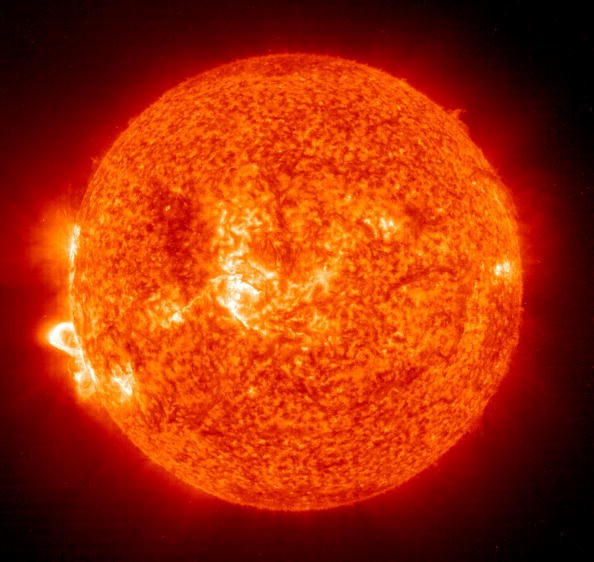A solar storm is presently bombarding Earth with the speed of over 2.1 million kilometres an hour. According to reports, this came after an appearance of a hole in the atmosphere of the Sun.

Solar Storm
Astronomers have disclosed a major hole has opened in the Sun's atmosphere surface. The hole has showed up in the sun's equatorial region. Scientists say this is letting a stream of solar particles emerge from our host star and, sadly for Earth, it is right in the cross-hairs of solar particles stream.
Analysis has disclosed the particles are travelling at a lurching 600 kilometres per second, or over 2.1 million kilometres per hour. While this solar storm will not manifest any sign of being dangerous, scientists have said it could bring about auroras.
On Astronomer Dr Tony Philips's Space Weather blog he wrote: "Today, Earth is engulfed in a stream of solar wind flowing nearly 600 km/s from an equatorial hole in the atmosphere of the sun. "High-latitude sky watchers should be vigilant for auroras, mostly in the southern hemisphere where autumn darkness favours visibility."
Auroras
Auroras, which include southern lights - aurora australis and northern lights - aurora borealis - are prompted when solar particles hit the atmosphere. As solar winds bombard the magnetosphere, stunning blue lights can emerge as that layer of the atmosphere deflects the particles. However, experts also note the effects of a solar storm and space weather can outstretch beyond southern or northern lights.
For the most part, the Earth's magnetic field safeguards humans from the bombardment of radiation emanating from sunspots, but solar storms can affect technology that is satellite-based. Solar winds can heat the outer atmosphere of the Earth, making it to expand. This can affect satellites in orbit, probably causing a lack of mobile phone signal, GPS navigation, and satellite TV such as Sky.

Magnetosphere
A gush of particles can also cause high currents in the magnetosphere. This can bring about higher than usual electricity in power lines, causing blowouts in power stations and electrical transformers and a loss of power. Past studies have disclosed every 25 years on average the Sun discharges an extreme solar flare, with the last Earth-hitting one coming in 1989.
This storm recognized power outages in Canada, Quebec, as conducting rocks on Earth can take the surplus energy from the magnetic shield and plough it into the national grid. While it is unfeasible to project when and where a massive solar storm might hit, it is unavoidable one will hit the planet in time to come. As such, scientists have criticised the lack of making preparations for an extreme space weather event, giving a warning that it could cost trillions and lead to general panic.
Related Article : Solar Storm Incoming Within 24 Hours: How Dangerous Will It Be?
For more news, updates about solar storms and similar topics don't forget to follow Nature World News!
© 2025 NatureWorldNews.com All rights reserved. Do not reproduce without permission.





